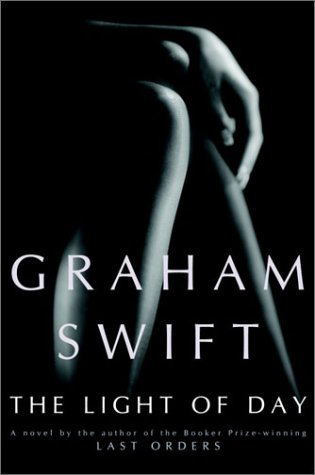
Graham Swift’s The Light of Day opens with all the promise of a standard detective potboiler. We meet an ex-cop private investigator named George Webb and Rita, his trusted assistant. However, there is little by way of mystery to this plot; or, to put it differently, to the extent that there is mystery in this novel, it doesn’t lie in the action, but rather, in the motives of the characters who drive the action. So it doesn’t give much away to summarize the story here—or at least the action of the story.
George Webb is divorced and has more of a relationship with his assistant than he ever did with his wife. In fact, they have slept together and Rita has long entertained the hope that something more might come of it. Lurking in the background is George’s memory of his parents and their questionable marriage. Despite the appearance of a happy marriage, George’s father maintained a clandestine relationship for several years. George discovered this as a boy by following his father—a practice which must come naturally to him, as he has taken it up professionally. Almost all his practice is devoted to following spouses to gather evidence for anticipated divorce proceedings.
One of George’s clients is Sarah Nash who is married to a gynecologist named Dr. Robert Nash. Sarah has taken home a student named Kristina Lazic, a refugee from Croatia, and the Nashes provide her with shelter. A relationship blossoms under Sarah’s nose. However, politics intervenes when the Croats defeat the Serbs and Kristina is no longer eligible for refugee status. Sarah retains George to follow Kristina and Robert to the airport and to verify that Kristina boards the airplane alone.
The upshot is that when Robert returns home, Sarah stabs him to death. She is imprisoned. What follows for George is a bi-weekly ritual that promises to go on for years. George purchases flowers, visits Robert’s grave, then goes from there to the prison where he visits Sarah. Rita looks on, thinking George is foolish, hoping he will get over whatever has possessed him to perform this ritual. So begins the mystery. Why do these people act as they do? What are their motivations?
Reviewers make a great deal of the fact that most of Swift’s novels are intensely local in geographic scope. Swift himself addresses this fact in his non-fiction work, Making An Elephant. The Light of Day is no exception. It’s set in and around Wimbledon and gets no further than a single car ride to Heathrow.
However, I don’t think this observation is as important as it is to note Swift’s treatment of time. His narrative approach is highly recursive. He gives us a little, moves on, then loops back to offer a little more. Although we know where we have to go—the path to the murder scene is ineluctable—nevertheless he takes us there by a meandering route. In a sense, the story is almost Shakespearean. Like the great tragedies, we already know what’s going to happen; the real question is: how will the hero meet the inevitable?
It’s similar here. We want to know whether the motives justify the actions. Can we find room in Sarah’s act of violence to attract our compassion? And in George’s devotion to counteract Rita’s accusation that he’s a fool? When we arrive at the scene of the murder, what we discover is the deft conclusion to an unfolding psychological drama.
If The Light of Day were a wine, I would describe it as having a smooth finish. In literary taste, I tend to be a Scotch man; I prefer something a little more bracing and maybe rough going down. But I suppose that’s neither here nor there, as that’s simply a matter of taste. On its own terms—as a wine—The Light of Day is a fine vintage.